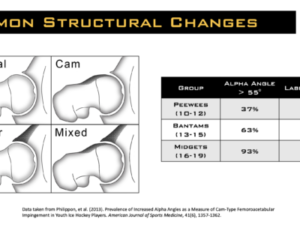We often hear about the importance of building an aerobic base early in the off-season to help establish an ability to better tolerate higher training volumes moving forward.
The reality is that the characteristics of the “base” should be specific to the athlete AND to future training phases.
For example, the “aerobic” base for a marathon runner should look very different than the aerobic base for a hockey player.
Further, in team sport athletes where speed and power development are clear priorities, the training methods used to develop those qualities need to be introduced and logically progressed. In other words, a team sport athlete’s “base” should include work that prepares them to tolerate high intensity training methods (sprinting, jumping, etc.).
The image above shows the heart rate response from performing 20 sets of 5 Kettlebell Swings, starting on the minute.
The KB swing, performed correctly, is a movement that emphasizes power development through the posterior chain.
Picking a moderate load, and performing a low volume of reps each set at max effort allows the athlete to accumulate higher volumes of high intensity work, emphasizing high threshold motor units, while keeping the overall training stimulus aerobic.
There are many different variations of this strategy both in terms of exercise selection and set/rep schemes, but the goal here is to keep the movement quality high and HR low (< mid 80s as a rough estimate) throughout the series. With KB Swings, when the athlete starts to fatigue, the movement will look less “bouncy” out of the bottom, and they’ll start to “muscle it” – which typically coincides with the HR climbing to higher peaks. When we see this, we’ll build in a break of a few minutes to reset before continuing on.
Take Home Message
When we talk about building a base – we need to think of building a base across multiple systems (including tissue tolerance), and specific to the individual needs of the athlete AND the training program.
Feel free to post any comments/questions below. If you found this helpful, please share/re-post it so others can benefit.
To your success,
Kevin Neeld
SpeedTrainingforHockey.com
HockeyTransformation.com
OptimizingAdaptation.com
P.S. For comprehensive hockey conditioning programs to improve your speed and repeat sprint ability, check out: Speed Training for Hockey
Enter your first name and email below to sign up for my FREE Sports Performance and Hockey Training Newsletter!







 Use CODE: "Neeld15" to save 15%
Use CODE: "Neeld15" to save 15%